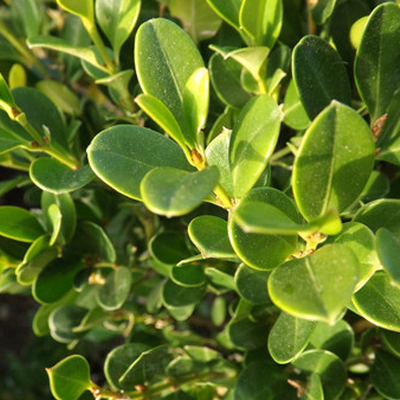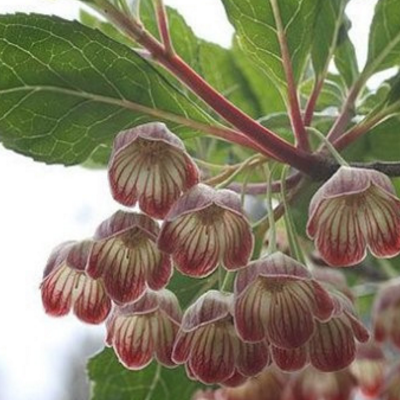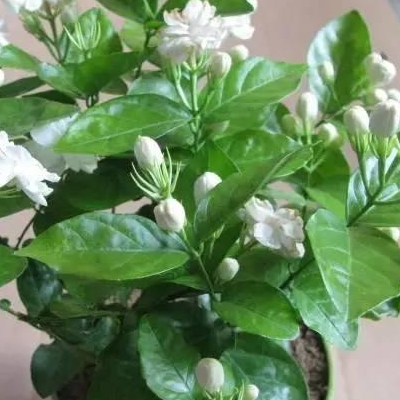How to water and fertilize the production method of boxwood bonsai
Boxwood, this is a kind of tree, this boxwood can be seen in many places, such as parks and so on, what is the method of making boxwood bonsai? How to water and fertilize yellow poplar:

Production method of boxwood bonsai:
First, draw materials
The plants selected for poplar bonsai production can be the branches from sowing and propagation or cutting propagation after years of cultivation and then transplanting in pots, or the old stakes of mature plants can be selected for bonsai production. For the old pile, it is necessary to dig out and prune first, so as to cut off the long roots and dense branches, and then raise the billet in the open air for one to two years before it can be put on the basin. Special attention should be paid to selecting plants and pruning roots according to the size of the bonsai basin.
2. Upper basin
1. The choice of bonsai basin
Poplar bonsai selection basin had better be purple sand pottery basin, the color of the basin had better be purple or light yellow, because this can match the oil green of boxwood, very beautiful. The shape of the bonsai basin should be judged according to the plant shape, and the cliff type and oblique dry type should choose different bonsai pots.
2. Potted map
Poplar bonsai had better choose fertile and loose soil with good drainage and ventilation, and generally use mature pastoral soil or rotten leaf soil mixed with ridge bran ash as cultivation soil. Pay attention to the old pile with persistent soil when it is put on the basin.
III. Cultivation
It is usually cultivated before sprouting in spring and then placed in a semi-shady place. Also need to pay attention to pruning too long roots to avoid plate in the basin, affecting the transport of nutrients, is not conducive to healthy growth.
IV. Modelling
Before modeling, we should first cut off the trunk and grow new branches, and then climb and bind the branches according to different modeling requirements, mainly cloud flake or steamed bread-shaped, natural tree type, trunk homeopathic growth can be. Because of the strong germination of boxwood, it should be pruned regularly to maintain the shape of the tree.
How to water and fertilize yellow poplar:
1. How to water boxwood
Huang Yang likes water and should follow the principle of "better wet than dry" in watering Huang Yang. When Populus tomentosa was still a seedling, the root system was shallow and watered a small amount for many times to keep the surface soil moist. The rapid growth of seedlings requires a lot of water, so the amount of irrigation should be increased and watered thoroughly each time.
In the later stage of seedling growth, in order to avoid excessive growth of seedlings, we should start to control watering, preferably in the morning or evening, and avoid being carried out at noon.
Huang Yang likes to be wet and can adapt to the cloudy and rainy weather for a continuous month, but can not accumulate water for a long time. Transplanting in summer or when sprouting new buds should pay attention to avoid long-term sun exposure and prevent the potted soil from getting too wet.
2. How to fertilize yellow poplar
The seedlings of Populus tomentosa need a lot of phosphorus, more nitrogen for rapid growth, and greater demand for potassium when growth stops in autumn. After planting, boxwood can be sprayed with 0. 5% in the morning or evening. 4% potassium dihydrogen phosphate, avoid in the strong sunshine at noon, three to four times a month.
For the newly transplanted boxwood, the early fertilization should be done in time, but the concentration should not be too high to avoid burning the new roots.
At the stage of rapid growth of seedlings, increase the amount and frequency of fertilizer application at least once a month. In addition, the application of nitrogen fertilizer should be carried out in spring and summer, and the last time should not be later than "the Beginning of Autumn". To avoid excessive growth of seedlings and weakening of overwintering ability, phosphorus and potassium fertilizers were mainly used from August to September to promote the Lignification and rooting of Populus tomentosa and enhance its ability to keep out the cold.
This is the end of the method of making boxwood bonsai, so we should pay attention to the methods of watering and fertilizing boxwood.
How to raise Populus tomentosa Bonsai production method
Poplar bonsai trees are beautiful, evergreen all the year round, can be watched all the year round, and are loved by many people. Many people like to raise some boxwood bonsai at home, so how to raise it? How to make it? Next, Xiaoqi will share how to raise boxwood bonsai and how to make boxwood bonsai.
Poplar bonsai pictures
First, how to raise boxwood bonsai
Watering: yellow poplar likes to be moist, bonsai needs to be watered frequently to keep the basin soil moist, but not stagnant water. During the high temperature in summer, water should be watered and foliar water should be sprayed in the morning and evening.
2. Fertilization: during the growing period from May to August, you can apply 2-3 rotten thin cake fertilizer and water, apply base fertilizer once in winter, and compost stable manure or dry cake manure.
3. Pruning: cut off overgrown branches, overlapping branches and extra branches that affect the shape of the tree at any time during the growing period. Populus tomentosa sprouts faster, generally after sending new shoots, the first 1-2 nodes will be cut off to prevent overgrowth. After fruiting, boxwood should be picked in time so as not to consume nutrients and affect the growth of trees.
4. Turning the basin: it is usually carried out once every 2-3 years, and the time is better before germination in spring. Combined with turning the basin to cut off part of the old roots and over-long and dense roots, replace 1 / 2 of the old soil, and plug it with fertile and loose culture soil to facilitate root development.
Poplar bonsai pictures
Second, the method of making boxwood bonsai.
1. Materials: seedlings propagated by sowing or cutting can be transplanted and processed in pots for several years. You can also select the old pile from the mountain, dig it up, trim the long roots and dense branches, raise the billet in the open field for 1 ~ 2 years, and then add soil to the basin.
2. Upper basin
① selection basin: yellow poplar perennial oil green, it is appropriate to use purple sand pottery basin, basin color to purple or yellow is better. The shape of the basin depends on the form of the shape. The cliff type should use a deep thousand-cylinder basin, while the oblique dry type or curved dry type should use an oval or rectangular basin.
② soil: the bonsai soil is cultivated on the basis of mature pastoral soil or rotten leaf soil mixed with appropriate ridge bran ash, and it is better to fill with fertile and loose soil with good ventilation and permeability, and the pot on the old pile should bring persistent soil.
③ planting: yellow poplar is more hardy and can be carried out before sprouting in the Chung season. When planting, the root system should be trimmed too long and too dense. Do not make the root nest bend in the basin. Newly planted poplars should be placed in a half-shaded place.
3. Styling: the yellow poplar has strong germination. Before modeling, the trunk can be cut off to sprout new skills around or below the cross section, and then according to the requirements of artistic modeling, it is better to climb the branches and use brown silk in the Chung season. It can also be roughly tied and cut to make a cloud sheet or steamed bread, or processed into a natural tree shape. The trunk is made into oblique dry type or prone type according to the natural trend. If the yellow poplar stump scenic spot decoration show stone, then into "yellow poplar, yellow poplar is very resistant to pruning, strong germination, in order to maintain a beautiful tree shape, must be often processed and reshaped.
Poplar bonsai pictures
The above is how to raise boxwood bonsai and how to make boxwood bonsai. Friends who like boxwood bonsai can make it by themselves. I hope the above content will be helpful to everyone.
Recommended reading:
The cultivation method of ① Masson Pine Bonsai experience of daily maintenance and management of Masson pine
② asparagus bonsai production and maintenance asparagus bonsai modeling picture
③ bonsai cultivation methods and precautions of Cunninghamia lanceolata
Can the fruits of ④ Prunus mandshurica be edible? making bonsai of Prunus mume
⑤ how to raise the bonsai of Phyllostachys pubescens
How to make big leaf boxwood bonsai? The production and maintenance of large-leaf boxwood bonsai, also known as regular wood, because the leaves are evergreen all the year round and do not wither through winter, so many places in our country are also known as "holly". It is an evergreen shrub or small tree of the family Celastraceae, with a height of 3 to 4 meters, branchlets green, slightly angled, leaves leathery, narrowly elliptic, ovate or Obovate, leaves dark green and glossy, margin obtusely serrated. Flowers 5 to 12 integrated Cymes, born in the upper leaf axils of branches, white-green florets; capsule oblate globose, light pink, dehiscent when ripe, revealing orange false pericarp, very beautiful. Populus tomentosa originated in southern Japan, is now widely cultivated as garden flowers and trees, its habits are strong, resistant to pruning, often used as hedges, or cut into balls, decorated with grass and other places, while using it to make bonsai is easy to obtain materials, can be mass production, extensive management and other characteristics. The big-leaf boxwood used to make bonsai is generally propagated by cutting or sowing; in addition, the old stump eliminated by the garden department can also be used to make bonsai, and it has the advantages of short forming time, and transplanting can be carried out all year round. The survival rate is high in spring and summer, and the excessively long roots should be cut off when transplanting, and the upper branches and leaves should be pruned properly to remove the branches that are not needed in order to reduce water evaporation. Pour water thoroughly after planting, pay attention to prevent hot sun exposure, and often spray water to the plant, in order to increase air humidity and improve the survival rate. Populus tomentosa bonsai can be processed into different forms of bonsai according to the stump shape, such as straight dry type, oblique dry type, curved dry type, double dry type, cliff type, waterfront type, stone-attached type and so on. Because of its large leaves, small and medium-sized bonsai crowns are mostly chic natural shape, while large bonsai can also use regular wafer shape. Its modeling is mostly carried out in the growing season, often using the method of "rough binding and fine cutting", first pruning out the basic form, and then fine pruning until it is formed. Seedlings because of their soft branches, can also be modeled from small, the method is first to the trunk flat tie, and then the main branches, side branches, and pay attention to timely cutting off excess branches. The wound of Euonymus tomentosa heals quickly, which can be used to carve the trunk to make it old and simple. Populus tomentosa likes warm, humid and sunny environment, slightly resistant to shade and cold, and is not strict with the soil, so it can be planted with ordinary garden soil. Usually, it can be maintained in an outdoor ventilated and sunny place, watering until it is dry and wet, and applying thin alum fertilizer once a month to provide sufficient nutrients to make the leaf color thick green and bright, but to avoid excessive fat and water, otherwise it will cause the plant to grow excessively, the leaf will become bigger, and affect the ornamental. Due to the strong germination of Euonymus tomentosa, it is often necessary to hit the head and pick the heart in maintenance in order to control the plant growth and make the leaves dense and small. For the branches and new buds that affect the tree shape on the trunk, they should be removed in time to keep the beauty of bonsai. In winter, put the flowerpot in the outdoor shelter or winter in the cold room, do not apply fertilizer, when the pot soil is too dry, you can properly water it. Turn the basin every 1 to 2 years in spring, remove 1 beat 3 to 1 hand 2 from the original soil, and then add new culture soil.
- Prev

The method of sowing and Propagation of Lantern Tree what if aphids grow
Lantern tree, this kind of plant is liked by many people, especially when it blossoms, it is really good-looking, what is the method of sowing and reproduction of this lantern tree? What if the lantern tree grows aphids: Lantern tree sowing and propagation method: seed treatment, lantern tree harvesting seeds when the fruit is ripe in autumn
- Next

How to raise jasmine and prolong its florescence? when to apply fertilizer?
Jasmine, this is a lot of people are super like, jasmine as long as blooming that is super fragrant, how to raise jasmine to prolong its flowering period? When to fertilize the jasmine: how to raise the jasmine to prolong the flowering period: in addition to the usual application of thin fertilizer, it makes the plant grow stronger, the environment is ventilated and the light is proper.
Related
- Fuxing push coffee new agricultural production and marketing class: lack of small-scale processing plants
- Jujube rice field leisure farm deep ploughing Yilan for five years to create a space for organic food and play
- Nongyu Farm-A trial of organic papaya for brave women with advanced technology
- Four points for attention in the prevention and control of diseases and insect pests of edible fungi
- How to add nutrient solution to Edible Fungi
- Is there any good way to control edible fungus mites?
- Open Inoculation Technology of Edible Fungi
- Is there any clever way to use fertilizer for edible fungus in winter?
- What agents are used to kill the pathogens of edible fungi in the mushroom shed?
- Rapid drying of Edible Fungi

